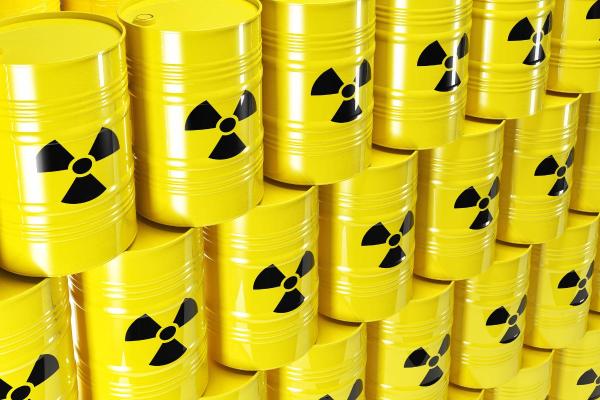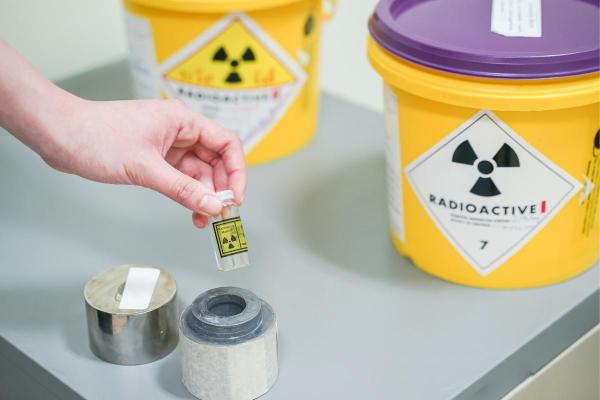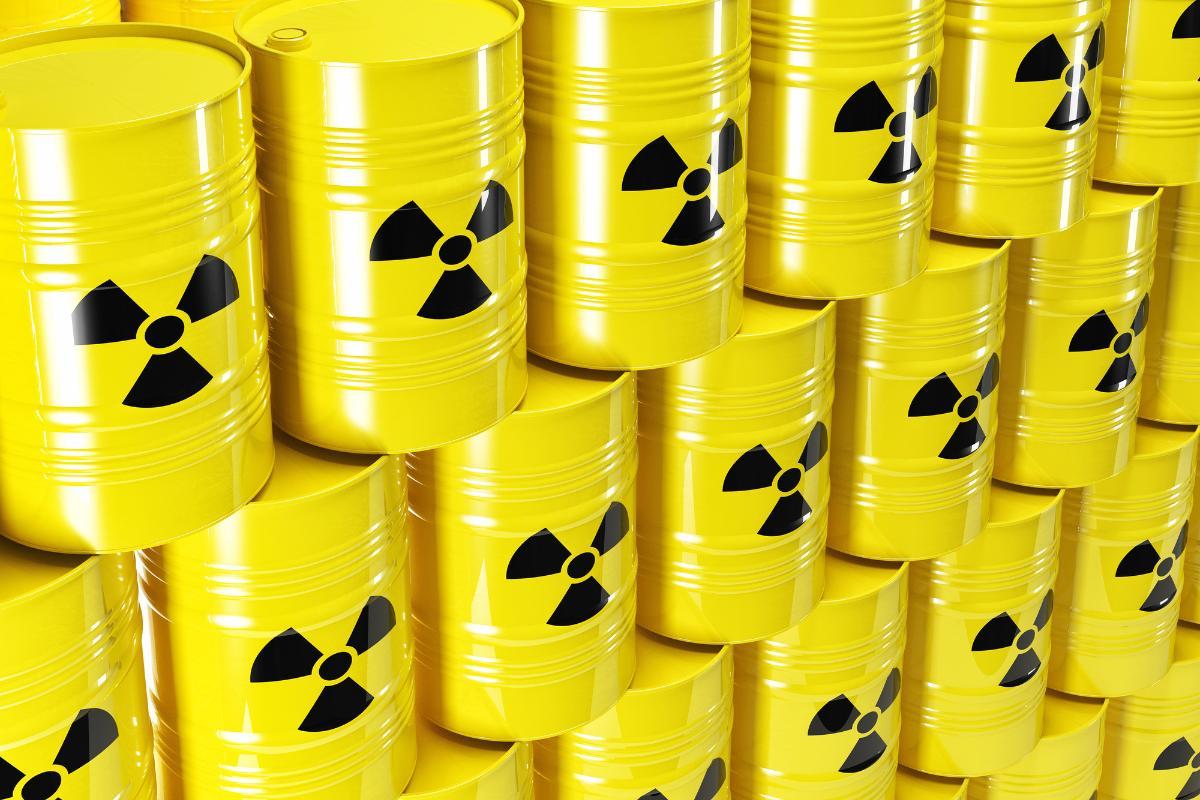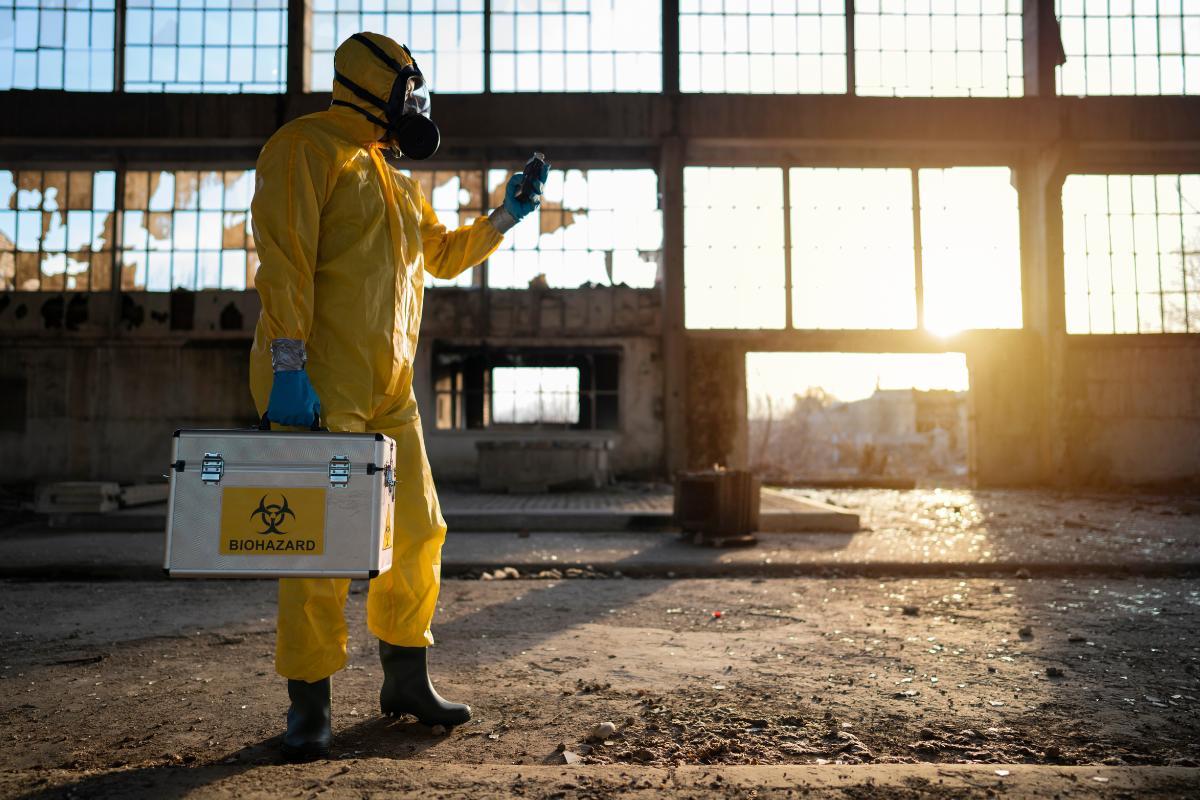What Is Radioactive Waste Management?


Radioactive waste is any material that contains radioactive substances. These substances are unstable and can emit harmful radiation. Radioactive waste can be produced from a variety of sources, including nuclear power plants, nuclear weapons production, and medical procedures. Radioactive waste is a serious environmental hazard if it is not properly managed. It can pollute the air, water, and soil, and it can pose a risk to human health and the environment. However, radioactive waste can be managed safely and effectively.
In this article by thedailyECO, we will discuss what radioactive waste is, how it is classified, and how it is managed.
What is radioactive waste?
Radioactive waste is a term used to describe materials that contain radioactive substances. These substances are the result of human activities that involve the generation or manipulation of nuclear substances, such as nuclear energy production in nuclear power plants, nuclear weapons manufacturing, nuclear research, and nuclear medicine.
Radioactive waste can take various forms, including solids, liquids, or gases. Its level of radioactivity can vary from low to extremely high, depending on its origin and composition.
Radioactive material contains atoms with unstable nuclei. These nuclei can spontaneously emit radiation, which is energy in the form of particles or waves. The radiation can be harmful to human health and the environment.
The radioactivity of a material is determined by the number of unstable nuclei it contains. The more unstable nuclei a material has, the more radioactive it is. The radioactivity of a material can also be affected by its half-life. The half-life is the time it takes for half of the unstable nuclei in a material to decay.
The most common types of radiation emitted by radioactive materials are alpha particles, beta particles, and gamma rays. Alpha particles are the least penetrating type of radiation, but they can be harmful if they are inhaled or ingested. Beta particles are more penetrating than alpha particles, but they are still not as penetrating as gamma rays. Gamma rays are the most penetrating type of radiation and can travel through many materials, including skin and bone.

Classification of radioactive waste
Radioactive waste is classified into several categories based on its level of radioactivity, its origin, and its properties. These classifications may vary depending on the regulations of each country. Below is a general categorization:
Low-Level Radioactive Waste (LLRW)
LLRW contains low levels of radioactivity and is typically generated in medical, research, and industrial applications. This category includes items like contaminated clothing, gloves, glass, and paper. LLRW can often be managed as conventional waste, although precautions may be required in some cases.
Intermediate-Level Radioactive Waste (ILRW)
ILRW consists of waste with higher levels of radioactivity and is often produced in the nuclear industry, nuclear medicine, and during the decommissioning of nuclear facilities. This category encompasses materials such as worn-out components from nuclear plants and radioactive filters. ILRW typically requires more careful handling and is stored in specialized facilities.
High-Level Radioactive Waste (HLRW)
HLRW is highly radioactive waste, primarily originating from spent nuclear fuels and the operation of nuclear power plants. Due to its extreme radioactivity, HLRW demands stringent safety measures and is stored in specially designed containers and deep geological repositories.
Transuranic Waste (TRU)
Transuranic waste contains elements heavier than uranium, such as plutonium. It is primarily generated during activities related to nuclear weapons production, as well as nuclear plant operations. TRU waste is stored in special containers and can be sent to dedicated disposal facilities.
Short-Lived Radioactive Waste
This category includes waste that is highly radioactive but has a short lifespan in terms of radioactivity. Examples may include certain chemicals used in nuclear medicine. These materials are typically stored for a limited time before disposal.
Research and Development (R&D) Waste
R&D waste can vary in radioactivity and nature, arising from nuclear research activities and the development of new nuclear technologies. The management of R&D waste depends on its specific properties and radioactivity level.
You might also be interested in this other article that discusses the different types of biomedical waste.

Radioactive waste management
Radioactive waste management is a complex and challenging process that is essential to protect human health and the environment. The process involves several steps, including:
- Generation: radioactive waste is produced in a variety of activities, including nuclear power generation, nuclear medicine, nuclear research, industrial processes, and the decommissioning of nuclear facilities.
- Classification: radioactive waste is classified based on its level of radioactivity and specific properties. This helps to determine the appropriate handling and disposal methods.
- Temporary storage: radioactive waste is typically stored in facilities specifically designed to isolate and protect it from the environment. This may involve the use of sealed containers and secure storage areas.
- Safe transportation: when necessary, radioactive waste is transported from its point of origin to storage or disposal facilities using specialized containers and vehicles. Strict transportation regulations are followed to mitigate any potential risks.
- Final disposal: the final disposal of radioactive waste is a highly controlled and regulated process. One approach is deep geological disposal, where waste is securely placed in geological formations like salt or rock deposits, isolated from the surface for thousands of years. In certain cases, low and medium-level waste may undergo processing and conditioning before final disposal to reduce volume and radiological risk.
- Monitoring and tracking: following final disposal, a long-term monitoring system is established to assess safety and environmental impact. This monitoring ensures that there are no radioactive leaks and that safety standards continue to be met over time.
- Regulation and supervision: radioactive waste management is subject to government regulations and supervision in most countries. Regulatory agencies play a critical role in ensuring compliance with safety regulations and safeguarding public health and the environment.
Radioactive waste management is a highly technical and regulated process that requires a multidisciplinary approach and cooperation among various stakeholders, including governments, the nuclear industry, and the scientific community. The primary objective is to ensure long-term safety while minimizing risks associated with radiation.
Furthermore, transparent and open communication with the public is essential for building trust and understanding regarding radioactive waste management. Educating the public about the associated risks and safety measures is integral to the process.
You might also be interested in this other article that explores the main characteristics of renewable and non-renewable energies, as well as their differences.
If you want to read similar articles to What Is Radioactive Waste Management?, we recommend you visit our Recycling and waste management category.







